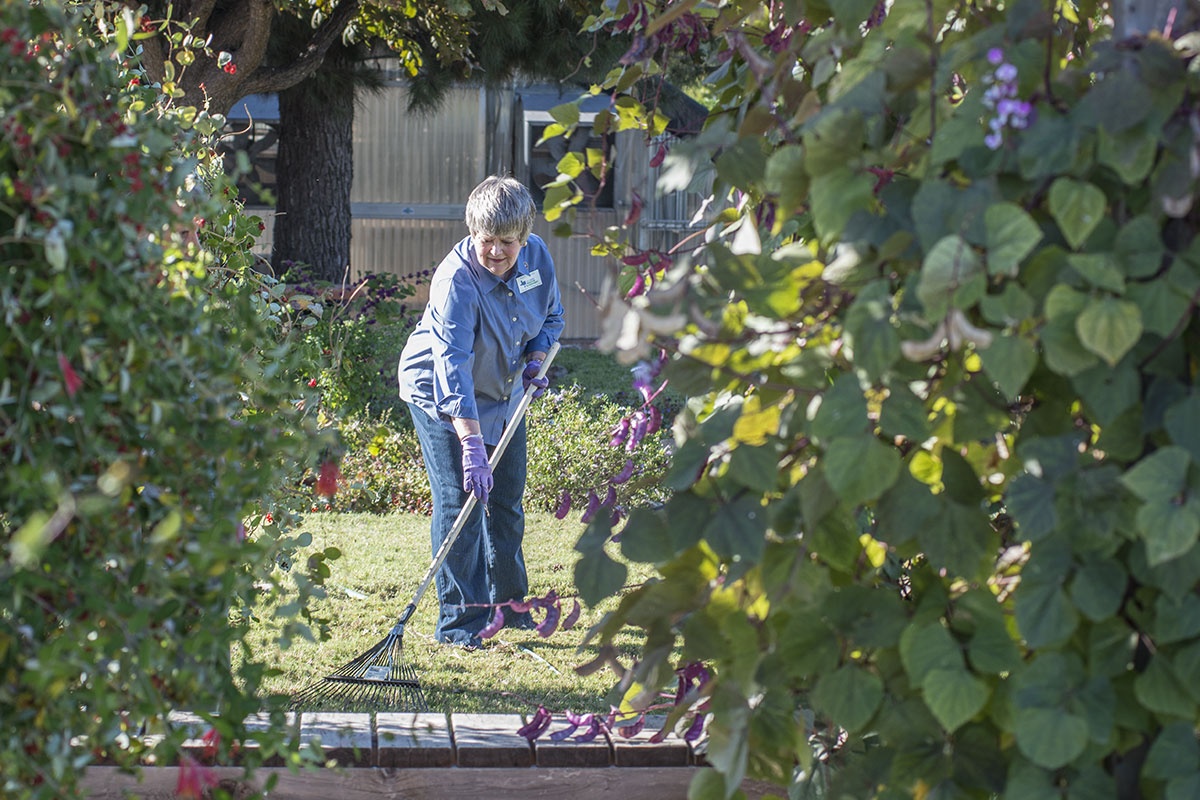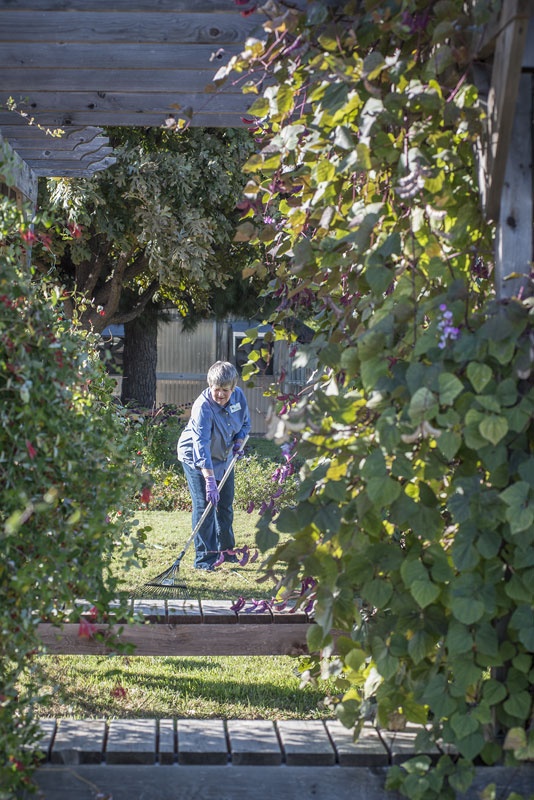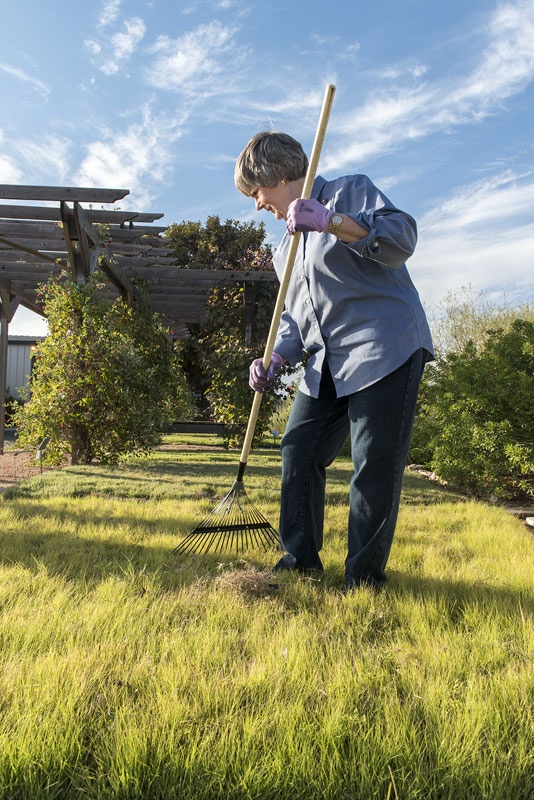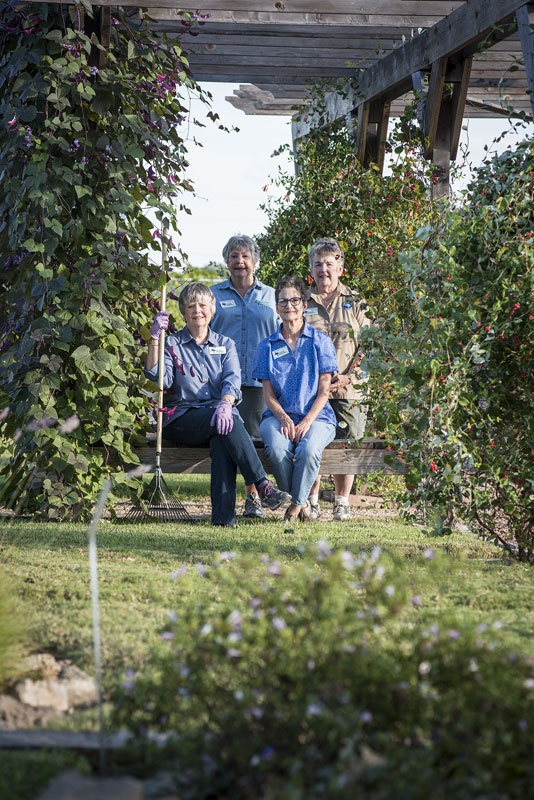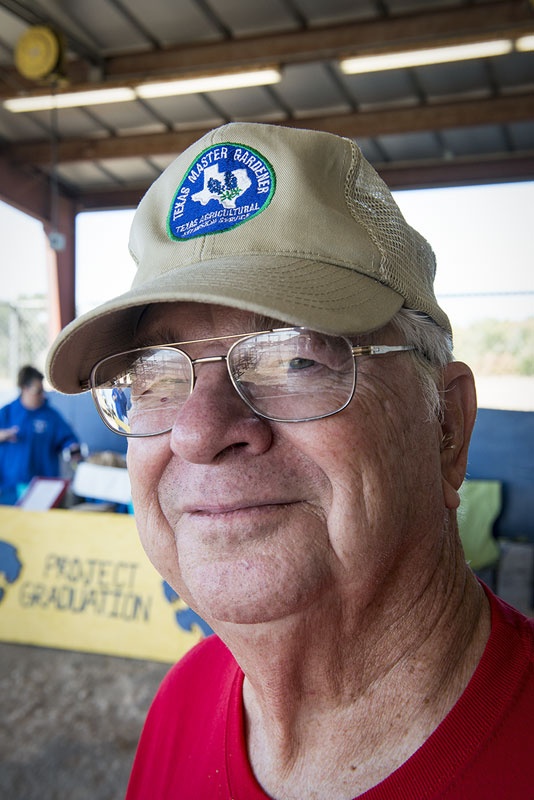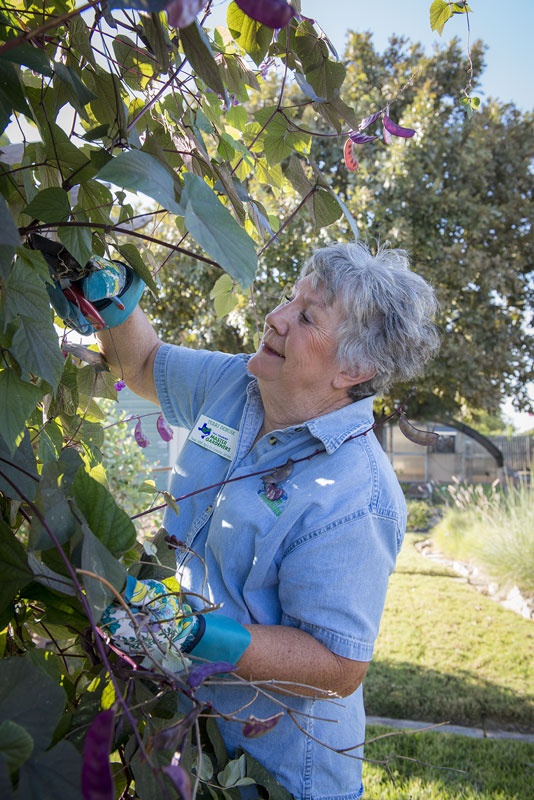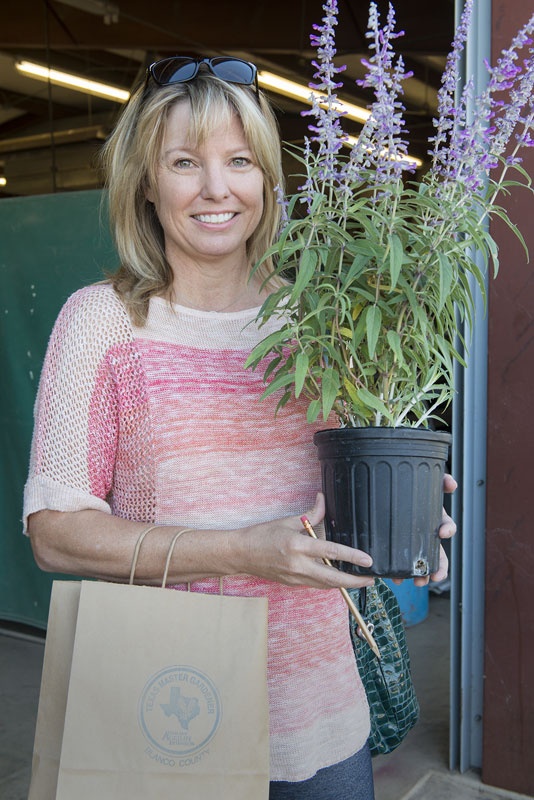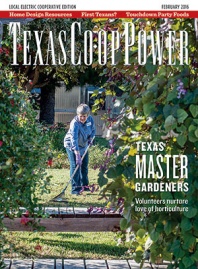Overgrown with weeds and brush, 23 acres of city-owned property in the East Texas town of Quitman stood neglected. That is, until Pam Riley, one of 78 current members of the Wood County Master Gardeners Association, an offshoot of the county’s extension program, proposed a project to preserve the area’s diverse flora and teach others about horticulture.
Eight years later, the Quitman Arboretum & Botanical Gardens attracts hundreds of visitors who stroll the walking paths, tour the gardens and attend workshops. In May, Science Day at the Arboretum, hosted by the master gardeners, teaches local third-graders about vegetable gardening, plant propagation and honeybees.
“We’re the only arboretum in Texas that’s managed completely by volunteers,” Riley says. “The community supports us in other ways, too. Wood County Electric Cooperative, of which I’m a member, has donated plants and a gazebo and installed electricity where we’ve needed it.”
Debbie Robinson, Wood County EC general manager, says she admires master gardeners for their willingness to volunteer, learn about gardening and share their knowledge with others. “Across Wood County, their work gilds our town squares, libraries and parks,” Robinson says. “We love to support our master gardeners.”
From planting demonstration gardens to fielding questions, giving presentations, working with kids and writing articles, approximately 6,160 master gardeners in more than 100 of Texas’ 254 counties share their gardening know-how within their communities. Annually, they contribute 550,000 hours of volunteer work worth $11 million toward a common mission: to assist county agents with the Texas A&M AgriLife Extension Service in disseminating gardening information.
The idea for training grassroots gardening experts originated in the 1970s when two extension agents in Washington state became overwhelmed with gardening questions from the public. To relieve the pressure, they recruited and trained volunteer assistants who, once trained, earned the title of “master gardener.”
Today, master gardener programs exist in all 50 states. The concept spread to Texas in 1978 when the late Sam Cotner, an extension vegetable specialist, shared the program’s success with his colleagues. Doug Welsh, an extension horticulturalist, was soon hired to work as the first state coordinator. In 1979, 25 trainees attended the first class, held in Montgomery County. Galveston and El Paso counties started their own programs in 1981, followed by five more by the end of the decade.
Jayla Fry, statewide coordinator in College Station, has overseen the Texas program since 2008. “What really sets master gardeners apart from other home gardeners is their special training in horticulture,” she explains. “In exchange for their training, those who become master gardeners work as volunteers through their Texas A&M AgriLife Extension office.”
Basic training, which varies by county, covers botany, soils, composting, vegetables, plant diseases, lawn care, water conservation and more. Most volunteers join a nonprofit county association. Most associations and county programs raise funds through plant sales, but some partner with other groups or companies to obtain funding or grants.
Though they share the same vision, Texas master gardeners affect their neighborhoods in ways that vary as widely as the geography where they live.
A mere 10 inches or so of rain falls annually on Ector and Midland counties in West Texas, where the flat, mostly treeless terrain stretches to the horizon. So the 164 volunteers with the Permian Basin Master Gardeners Association strongly stress water conservation.
“Our master gardeners teach workshops about rainwater harvesting,” says Extension Agent Jeff Floyd. “We charge a fee, but participants go home with a 55-gallon drum. Our hope is that they’ll get hooked on rainwater collection and buy a bigger collection tank.”
Among their many projects, Permian Basin volunteers partner with the city of Odessa to maintain a compost demonstration garden that teaches how to recycle yard waste. They also help maintain the George and Milly Rhodus Sculpture and Sensory Garden at the Ellen Noel Art Museum in Odessa.
“It’s so neat to be able to spread my enthusiasm for gardening,” says Barbara Porsch of Midland, the association’s president, who trained in 1992 and writes about herbs for the group’s monthly newsletter. “My grandchildren even call me ‘Pepper’ because that’s what I love to grow.”
Farther west, 100 volunteers with the El Paso Master Gardeners Association tend a public rose garden, pick up trash along the Woodrow Bean Transmountain Road and host Saturday gardening classes. At a demonstration garden in El Paso’s Ascarate Park, they show residents how to use raised beds, containers and rainwater barrels to grow vegetables in the Chihuahuan Desert.
“We receive less than 8 inches of rain annually,” says retired school administrator Jan Petrzelka, association president. “We can’t raise heirloom tomatoes here! So we research what grows best and share what we learn with the public. What we raise goes to our local food bank. Last year, we donated 1,594 pounds of vegetables.”
On the Gulf Coast, master gardeners in Aransas and San Patricio counties visit with property owners to answer questions and offer advice. “Our coastal live oaks here are so important to us, and many of them are declining,” says Extension Agent Ginger Easton Smith in Rockport. “Our trained ‘tree team’ checks oaks for hypoxylon canker and offers pruning advice.”
Every month, the master gardeners host brown bag seminars, where participants can learn about composting, pruning, water-wise landscaping and controlling invasives. “Our master gardeners also answer gardening questions on our hotline and help with the annual HummerBird Celebration,” Smith says.
In the five Hill Country counties of Kerr, Kendall, Gillespie, Bandera and Real, approximately 100 volunteers form the Hill Country Master Gardeners Association. They assist with 10 community gardens, award scholarships to horticulture students and sell plants at Kerrville’s monthly Market Days.
“Our oak wilt specialists make home visits, which helps me out,” says Extension Agent Roy Walston, who’s a member of Central Texas Electric Cooperative. “Our master gardener network definitely expands the capabilities of Texas A&M AgriLife.”
In April, the gardeners sell plants and rain barrels at their annual Blooms & Barrels event. “We’ve expanded the day to include public education programs and demonstrations,” says Patty Zohlen, a retired registered nurse and the association’s president. “Once you learn about gardening, you want to talk about it!”
In Houston, people struggling with chemical addictions find healing in a therapeutic greenhouse tended by the Harris County Master Gardeners Association. Horticulture Specialist Jeanie Dunnihoo, who’s also a master gardener, oversees the greenhouse and Serenity Gardens at the Memorial Hermann Prevention and Recovery Center. “Stress often leads to drug or alcohol abuse,” Dunnihoo explains. “We teach people how gardening and being with nature relieves stress.”
Although Madison County lacks a master gardener program, three certified volunteers work in Madisonville’s Restoration Community Gardens. The 6-acre project, sponsored by the county and Texas A&M AgriLife, consists of raised vegetable beds, a rainwater collection system and an aquaponics system.
Fun Fridays, a children’s summer camp at the gardens, includes a gardening component hosted by master gardeners. “We teach kids about vermiculture, composting and keyhole gardening,” says Leslie Lazenby, a master gardener who first envisioned the community gardens. “Ultimately, we want to empower our residents by teaching gardening fundamentals and self-sustainability.”
Extension Agent Jennifer Herrera works with the 35 members of the Cameron County Master Gardeners Association. “In our demonstration garden, they teach the public about vegetable gardening, rainwater harvesting and attracting butterflies,” she says. “In the Valley, we have two growing seasons for vegetables, so we help people select the best plants for each season.”
Master gardener Elizabeth Garcia, who works full time at a Brownsville charter school, volunteers at five vegetable gardens in low-income communities where diabetes and obesity run high, and healthy foods are difficult to obtain. As part of the Growing and Nourishing Healthy Communities program, the gardens were funded by the U.S. Department of Agriculture and implemented by Texas A&M AgriLife.
“We’re teaching adults and kids how to grow their own food,” Garcia says. “Each family has its own plot, and we provide everything they need. The program is making a huge difference. I know one man in his 70s with diabetes who’s going to the doctor less and taking less medication, all because he’s eating fresh vegetables.”
“As a master gardener, I love to teach,” Garcia adds. “It’s thrilling to hear people tell me, ‘This was a seed in my hand, and now I’m eating a carrot!’ ”
——————–
Sheryl Smith-Rodgers, a member of Pedernales EC, lives in Blanco.
